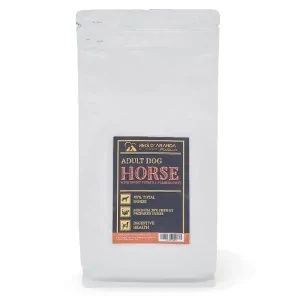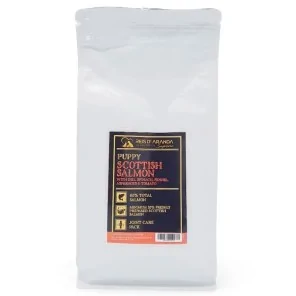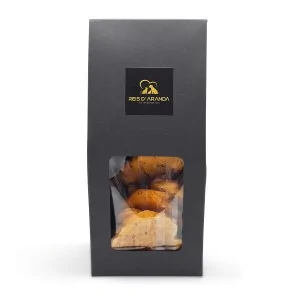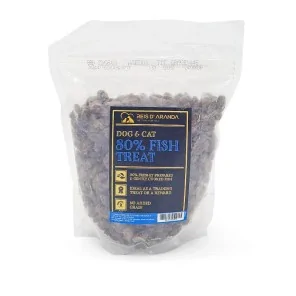The Tornjak originated from genetically homogeneous, almost extinct, indigenous shepherd dogs. These dogs have...
THE AFFENPINSCHER
INTRODUCTION
Affenpinscher is a breed of dog of the Pinscher family of small, stocky build, bred since the 17th century. Its coat is bristly, commonly black and short, giving it an ape-like appearance, hence the name of the breed.
THE HISTORY OF THE AFFENPINSCHER
It is difficult to know exactly from which dogs the affenpinscher originates. In the past, small, shaggy dogs were found in many countries of the world. The most likely hypothesis is that it comes from a cross between the pinscher and Asian pug-type dogs.
In one of Jan van Eyck's paintings of 1434, a small dog appears which could be an ancestor of the griffon, the dwarf schnauzer or the affenpinscher. What is clear is that the affenpinscher dog has long been what it looks like today.
In Germany, which is considered its country of origin, these dogs are one of the oldest and most unchanged breeds. Albrecht Dürer (1471-1528) already depicted dogs in his woodcuts which are very reminiscent of today's Affenpinschers.
The first records of these dogs date back to 1879. The famous reference work The Life of Animals of 1890 already describes the breed extensively. This shows how popular these little dogs were in their homeland.
Originally, they were kept and bred mainly as mousers, which kept mice and rats away from properties. However, their faithful attachment to the family soon came to be valued as well. This, together with his courage and alertness, made him an effective guard dog.
THE AFFENPINSCHER STANDARD
GENERAL APPEARANCE: The Affenpinscher is small, compact and rough-coated, with a monkey-like appearance to the face.
IMPORTANT PROPORTIONS : The build should appear as square as possible in relation to length of body and height at withers.
HEAD
CRANIAL REGION
SKULL : Spherical rather than elongated, not too heavy overall, domed upwards, with a marked forehead.
STOP: Clearly marked.
FACIAL REGION
TRUFFLE: Round, full and black. Nostrils wide open.
HOCIO: Short and straight (not turned upwards). The bridge of the nose is straight.
BELPHOS: Firmly attached to the jaws, the lips are black.
TEETH : Full bite, (42 clean, white teeth), the lower jaw is in front of the upper jaw and curves gently upwards. The incisors in a healthy bite are as regularly set as possible in the form of a slightly rounded line. The canines and incisors should not be visible when the mouth is closed; still less should the Affenpinscher show the tongue when the muzzle is closed. The absence of two missing PM1, PM2 or PM3 as well as the combined absence of two of these teeth must be tolerated.
EYES: Dark, rather round and full, with black, close fitting eyelids. They are surrounded by a crown of coarse hairs.
EARS: Set on high, carried symmetrically turned forward in a V-shape, the inner edges of the ears lying flat against the head. In the case of erect ears, they are small, equally erect, carried as vertically as possible.
NECK: The nape of the neck is straight, the neck is rather short, strongly set, powerful ; the throat skin is firmly set and without wrinkles.
BODY
TOPLINE: From the withers towards the rear in a gentle downward slope, approximately in the form of a straight line.
CROSS: Highest point of topline.
BACK: Strong, short, firm.
LOIN: Short, strong. The distance from the last rib to the hip is short so that the dog is compact.
Croup: Short, slightly rounded, passing imperceptibly over the set on of the tail.
CHEST: Barely flattened at the sides, moderately broad, sloping down beyond the elbows.
BOTTOM LINE: Lower and upper line running almost parallel. Belly moderately tucked up.
TAIL: Natural, the aim being to achieve a sabre or sickle shape.
LIMBS :
FOREQUARTERS: Forelegs strong, straight, parallel and not too close together.
Shoulders: Well muscled. Shoulder blade long, sloping (approximately 45°), flat and well attached.
ARM: Close to the body, strong and muscular.
ELBOW: Well positioned, turning neither in nor out.
FOREARM: Strongly developed and straight from all sides.
BODY: Firm and strong.
Pastern: Seen from the front straight; in profile there is a slight slope in relation to the ground; strongly developed and muscular.
HANDS: Short and round, toes close together and arched (cat feet), strong pads, short black strong nails.
HINDQUARTERS: Seen from the side, slightly sloping, moderately angulated. Seen from behind, parallel.
Upper thigh: Strongly muscled, broad.
KNEE: Should be turned neither in nor out.
Pastern: Long and strong
HIP: Moderately angulated
METATARSE: Perpendicular to the ground.
FEET: Slightly longer than forefeet; toes close together and arched; nails short and black.
GAIT / MOVEMENT: Loose and flowing, with short, quick strides, with moderate rear drive. Viewed from front and rear straight and parallel.
SKIN: Firm all over.
HAIR: The hair on the body should be harsh and tight. The head is typically decorated in the form of bushy eyebrows like rays encircling the eyes to form a crown, the impressive beard, the topknot on the head and the hair on the cheeks. The hair on the head should be as hard, straight and standing perpendicular to the skin, like rays. These are the essential characteristics which give the Affenpinscher the appearance of a monkey.
COLOUR: Pure black with black undercoat.
SIZE AND WEIGHT
HEIGHT AT CRUZ: From 25 to 30 cm.
WEIGHT: From 4 to 6 kg.
FAULTS: Any departure from the foregoing points should be considered a fault and the seriousness with which the fault should be regarded should be in exact proportion to its degree and its effect upon the health and welfare of the dog.
- Appearance heavy or light, short or patilargos.
- Light coloured eyes.
- Low set or very long ears, ears carried differently from each other. Floppy ears.
- Back too long, tucked up or soft.
- Croup drooping.
- Tail set on turned towards the head.
- Hindquarters excessively angulated and barrel back.
- Long feet.
- Short, soft, wavy, wavy, fringed, silky, white or spotted coat.
- 1 cm above the upper limit or 1 cm below the lower limit.
SERIOUS FAULTS
- Lack of typicality of sex expression (e.g. male female).
- Bones too light.
- Griffon type muzzle curved upwards, long muzzle.
- Exaggerated undershot mouth, pincer bite.
- Eyes protruding.
- Elbows turned outwards.
- Hocks turned inwards.
- Deviation between 1 cm and 2 cm above the upper or below the lower height limit.
ELIMINATION FAULTS
- Aggressive or fearful dog.
- Deformity of any kind.
- Lack of breed typicality.
- Gross faults in each region such as faults of construction, coat and colour.
- More than 2 cm above or below the upper and lower limit measurements.
Any dog showing clear signs of physical or behavioural abnormalities should be disqualified.
NB : Male dogs should have two apparently normal appearing testicles fully descended into the scrotum.
AFFENPINSCHER HEALTH
The average life expectancy of this breed is 15 years.
Although the Affenpinscher is a robust breed, it is not exempt from health problems. Some of the more common conditions in Affenpinschers include:
- KNEE LUXATION: This condition, in which the kneecap is displaced from its normal position, can be caused by a genetic abnormality or trauma. It may require surgical treatment if severe.
- DENTAL PROBLEMS: Given their small mouth, Affenpinschers can have problems with dental crowding, which can lead to tooth decay and periodontal disease. Regular dental care is essential to prevent these problems.
- EYE PROBLEMS: Affenpinschers may be prone to eye diseases such as cataracts and progressive retinal atrophy. Regular eye examinations can help detect and treat these problems early.
THE AFFENPINSCHER'S PERSONALITY
The Affenpinscher is considered an extraordinary pet and a great companion dog. He is very loyal and affectionate to his master. He is good with children and other pets once accustomed to their presence. He is a bit fussy though; he does not like to get wet and if he has to go outside when it is wet he starts to make monkeys out of himself. He is a bit of a gossip and is always finding out about everything. He is also a bit daring and sometimes provokes dogs that can eat him in one bite.
This dog does not get bored. When there is nothing more to do, he starts to invent as puppies do. As he is a hunter, it is preferable that shoes and other items of such a size are not within his reach. You never know what his next idea is going to be. It is very important that he is taken to obedience classes from an early age.
CONCLUSION
The Affenpinscher is considered an extraordinary pet and a great companion dog. He is very loyal and affectionate to his master. He is good with children and other pets once accustomed to his presence. Although some are a little fussy; they do not like to get wet and if they have to go outside when they are wet they start to monkey around.
Leave a comment
Log in to post comments
















